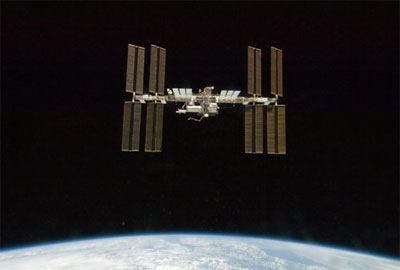Using the space station: where does the US go from here?by Taylor Dinerman
|
| With the ISS nearly complete, the big questions now are: how will it be kept going, and what will the partnership do with it? |
The Russians are, without a doubt, going to keep flying their Soyuz and Progress missions indefinitely. By the end of the next decade they may come up with an improved vehicle or a replacement. The Europeans have plans to launch one Automated Transfer Vehicle resupply ship every couple of years. At some future point they may find the cash needed to turn it into a crew-carrying vehicle, but that is doubtful any time soon. The Japanese HTV resupply vehicle also has the potential to eventually become a manned vehicle.
Realistically, however, only America is in a position to challenge the coming Russian monopoly over human access to the ISS. If NASA is able to buy seats on a US commercial vehicle beginning in 2012 or 2013, then the US will be able to make full use of its ISS investment. If the agency has to wait until 2015, 2016, or later for the Ares 1/Orion combination to be ready, then it is likely that the majority of the technology development and scientific work done on the ISS will not be American.
Since the station was first occupied on a permanent basis in November 2000 NASA has been able to perform a surprisingly large amount of research. This is detailed in the NASA report “International Space Station Science Research Accomplishments During the Assembly Years: An Analysis of Results from 2000-2008.” It covers some old favorites, such as the Materials International Space Station Experiments (MISSE), which over the years has repeatedly exposed a wide variety of materials to the space environment in order to discover if the react as predicted to long-term exposure in low Earth orbit (LEO).
Since 2004 NASA’s masters in the White House and Congress have directed the agency to use the ISS to support future manned missions to the Moon and Mars. MISSE has been used to test materials for the planned Orion multipurpose capsule. Medical and some biological work is also oriented in that direction, but by no means have these priorities been given exclusive rights to the exclusion of everything else.
The subjects covered in the report include human research, biology, physical sciences, Earth observation and education, and ISS operations. Obviously not everything can be described as pure science. Some of the work is simply NASA learning how to operate the ISS. The Educational Payload Operations, in their various forms, serve the important purpose of helping school science programs, but cannot really be described as hard science.
Some projects are more closely related to technology development than to science. The “Lab on a Chip” experiments, which started in 2007, take technologies that have been in development on Earth for years and apply it to space. This is an example of the synergistic relationship between space and Earth technologies. Anything designed to work in space must be far more reliable and robust that its planet bound equivalent. Eventually, this produces better products on Earth.
| In the first ten years of the ISS’s lifetime NASA has done almost all the scientific research it could reasonably be expected to do. |
The biological and medical programs were supposed to be the most valuable, and while no Earth-shattering discoveries have emerged, the wide variety of experiments are slowly building up NASA’s and America’s expertise in these disciplines. A number of protein crystal growth experiments have been carried out, but it will be years before anyone can truly now just how useful these have been. Today, any claims for huge success in this area—or for dismal failure—should be treated skeptically.
NASA has at least made a start studying the problem of galactic cosmic radiation. Protecting astronauts against this danger is almost certainly the greatest single scientific and technological challenge that must be overcome before we can send anyone to Mars.
Overall in the first ten years of the ISS’s lifetime NASA has done almost all the scientific research it could reasonably be expected to do. The Columbia disaster set the program back by at least three years. Now that there is a full six-person crew on board much more work can be done. For the US government it is now a question of how much future research will reflex US priorities versus how much will be done by others to suit their national goals.
